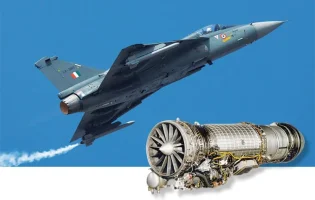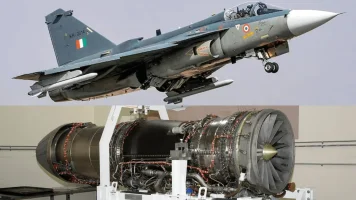- Views: 1K
- Replies: 4
As tensions remain high along India's borders, particularly with Pakistan, the Indian Air Force's (IAF) indigenous Tejas Mk1 fighter jet fleet is maintaining a significant level of operational preparedness.
Reports indicate that the Tejas Mk1 aircraft are mission-ready approximately 70-75% of the time. This availability rate is a crucial indicator of the fleet's condition, especially considering the current security climate and challenges within the global defence supply chain.
The operational availability of 70-75% for the Tejas Mk1 aligns well with accepted international military aviation standards. Global benchmarks, often citing historical data from forces like the US Air Force, suggest that an availability rate between 70% and 80% is optimal for fighter jets.
The reliable performance of the General Electric F404-IN20 engine, which powers the Tejas Mk1 and provides 84 kilonewtons of thrust, is a key factor in achieving this readiness level. Features like the engine's advanced digital control system (FADEC) allow for quick adjustments and efficient operation, vital in combat situations.
Furthermore, the aircraft's construction, using lightweight carbon composites for 90% of its surface, contributes to its durability and reduces maintenance needs, enhancing overall availability. The Tejas program is spearheaded by HAL, marking a significant step in India's defence self-reliance efforts.
This level of readiness is particularly relevant as the IAF operates in a complex regional security environment, highlighted by the breakdown of the 2021 Line of Control (LoC) ceasefire agreement with Pakistan and reports of electronic warfare measures like high-frequency jamming systems being deployed.
The IAF currently operates two squadrons comprising 40 Tejas Mk1 jets, which are available in both Initial Operational Clearance (IOC) and the more advanced Final Operational Clearance (FOC) configurations.
These indigenous fighters are instrumental in the IAF's plan to replace the venerable MiG-21 aircraft, gradually phasing them out as the Tejas assumes a greater role.
Capable of performing multiple roles, including air defence and ground attack missions, the Tejas Mk1 is vital to India's defence posture against potential threats in the Himalayan region and the Indian Ocean.
Despite the commendable readiness rate, challenges remain. The reliance on the imported F404-IN20 engine, while reliable, has previously impacted the broader Tejas program.
Notably, deliveries of these engines for the upcoming, more advanced Tejas Mk1A variant experienced significant delays, reportedly around two years, attributed to supply chain issues and production pauses at GE Aerospace, with initial deliveries for the Mk1A order only commencing recently. This history raises concerns about the potential for future bottlenecks, especially if rapid fleet expansion is needed during a conflict.
The IAF aims to induct 83 Tejas Mk1A jets by 2029 to bolster its strength, which currently stands at 31 fighter squadrons against a sanctioned requirement of 42.5. Meeting this induction timeline is critical as other older fleets, such as the Jaguar and Mirage-2000, approach retirement towards the end of the decade.
Therefore, while the current Tejas Mk1 readiness is positive, ensuring a steady supply chain for future variants remains essential for the IAF's long-term operational capability.



